BORIS Johnson will decide England’s new tiers tonight amid claims up to two thirds of people could end up in the toughest lockdown restrictions.
The Prime Minister will chair a meeting of the “Covid-O” committee this evening ahead of the Health Secretary’s announcement tomorrow.
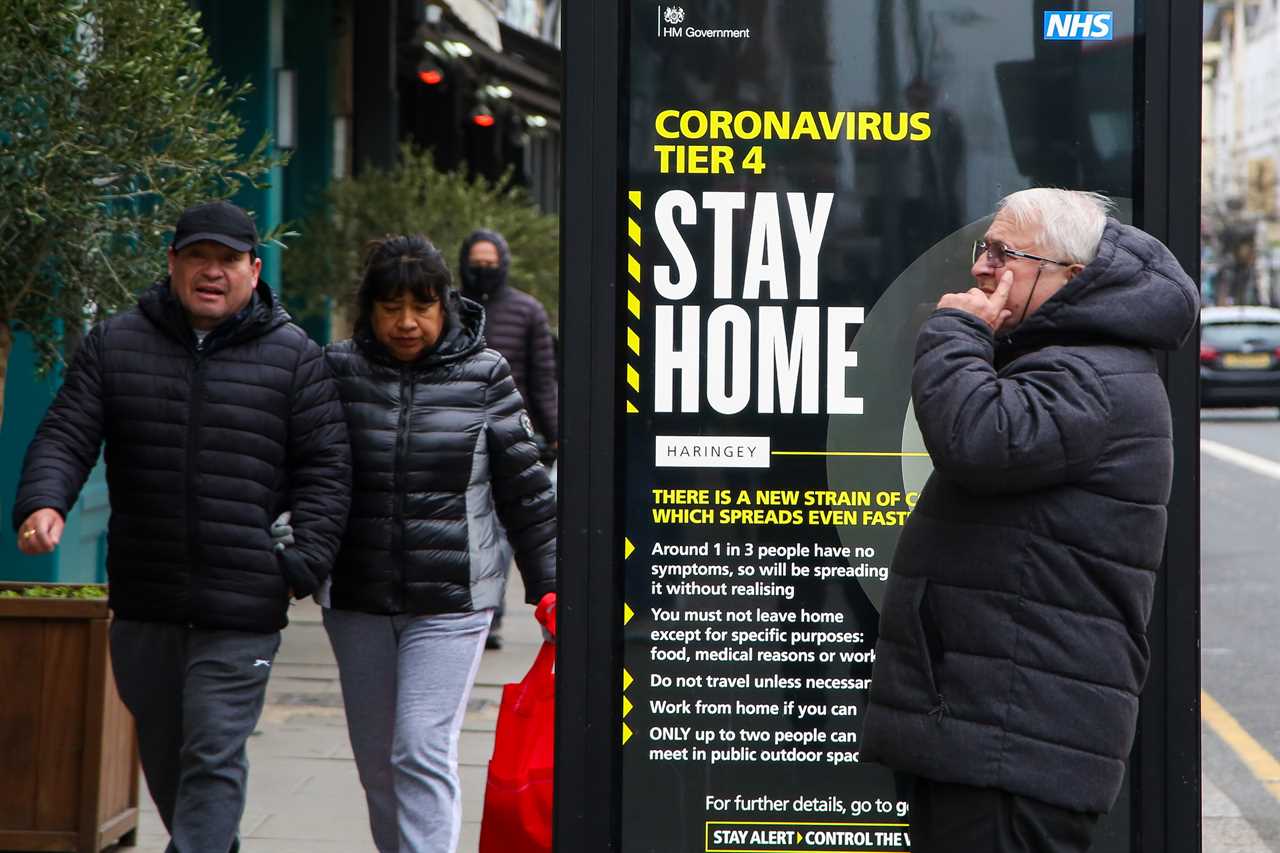
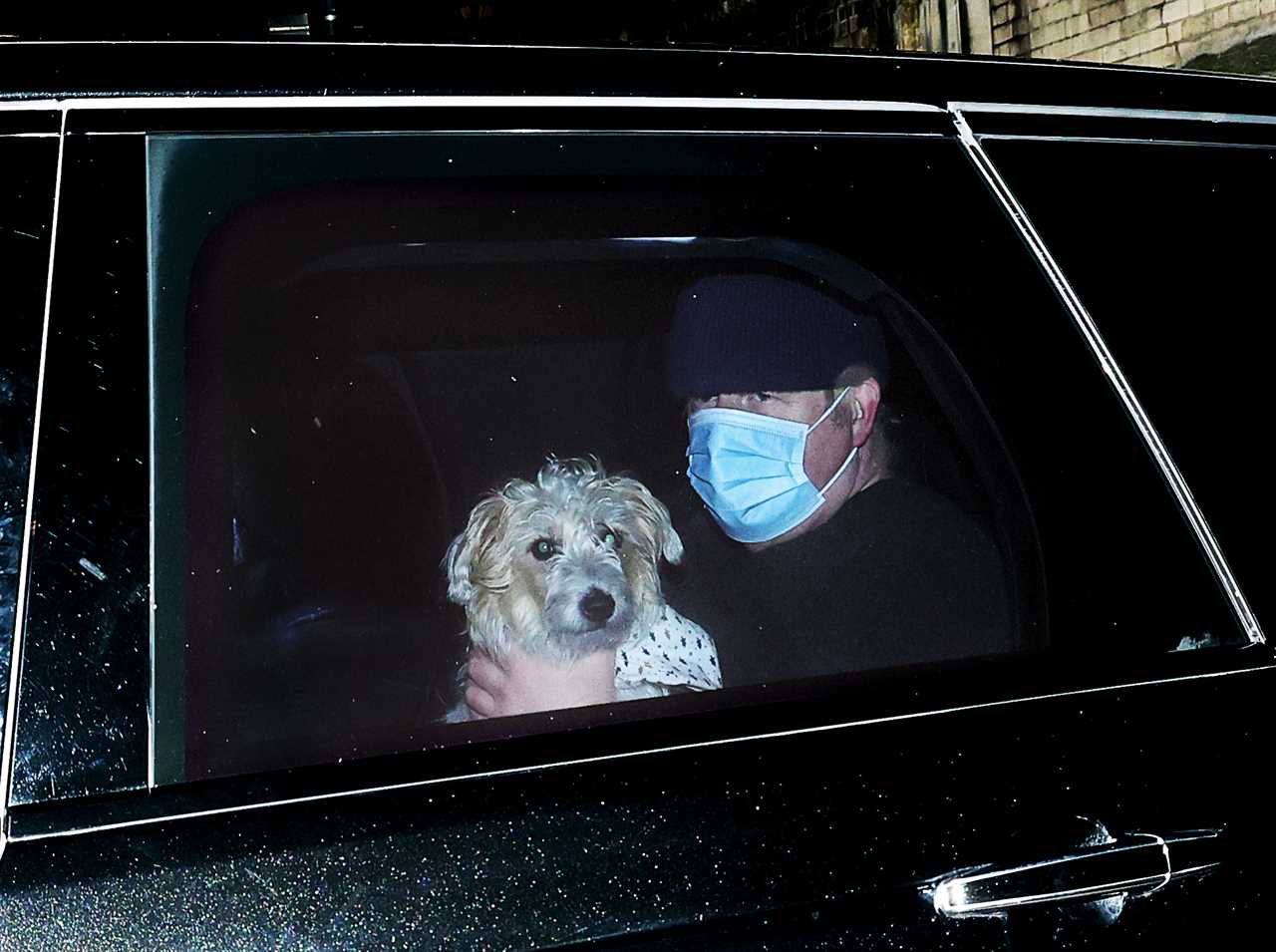
It comes as Whitehall sources claimed “sizeable chunks” of the Midlands and the North are expected to be put into Tier 4.
Ministers are growing increasingly concerned over new and more infectious Covid variants, which are spreading across the country.
The Government has yet to rule out tougher new “Tier 5” rules – which could see schools shut down – but a Whitehall source has said that expanding Tier 4 was more likely in the “immediate future”.
A health official told the Telegraph: “Coronavirus cases are rising across the country fuelled by the new variant, which has spread far beyond London and the South-East.
“I would expect more than half of England to move into Tier 4, but it wouldn’t surprise me if two thirds end up in the top tier.
“There is also real concern about the South African variant which seems to be spreading fast. Unfortunately, more action is needed to combat rising cases across the board.”
TIER REVIEW
More than six million people in east and south-east England went into the highest level of restrictions on Saturday, meaning 24 million people – 43 per cent of the population – are now affected.
The most recent data from the ZOE Covid Symptom Study app suggests that Tier 3 areas in the North including Greater Manchester and The Humber are on track for further measures.
Health Secretary Matt Hancock will announce which areas will move into tougher restrictions tomorrow afternoon.
It comes as a leading expert warned a national lockdown is needed to prevent a “catastrophe” as England’s hospitals deal with more Covid patients than during peak of the first wave in April.
Tighter measures are required to tackle the new variant of the virus, which is the main reason for the increase in cases, said Professor Andrew Hayward, of the Government’s New and Emerging Respiratory Virus Threats Advisory Group (Nervtag).
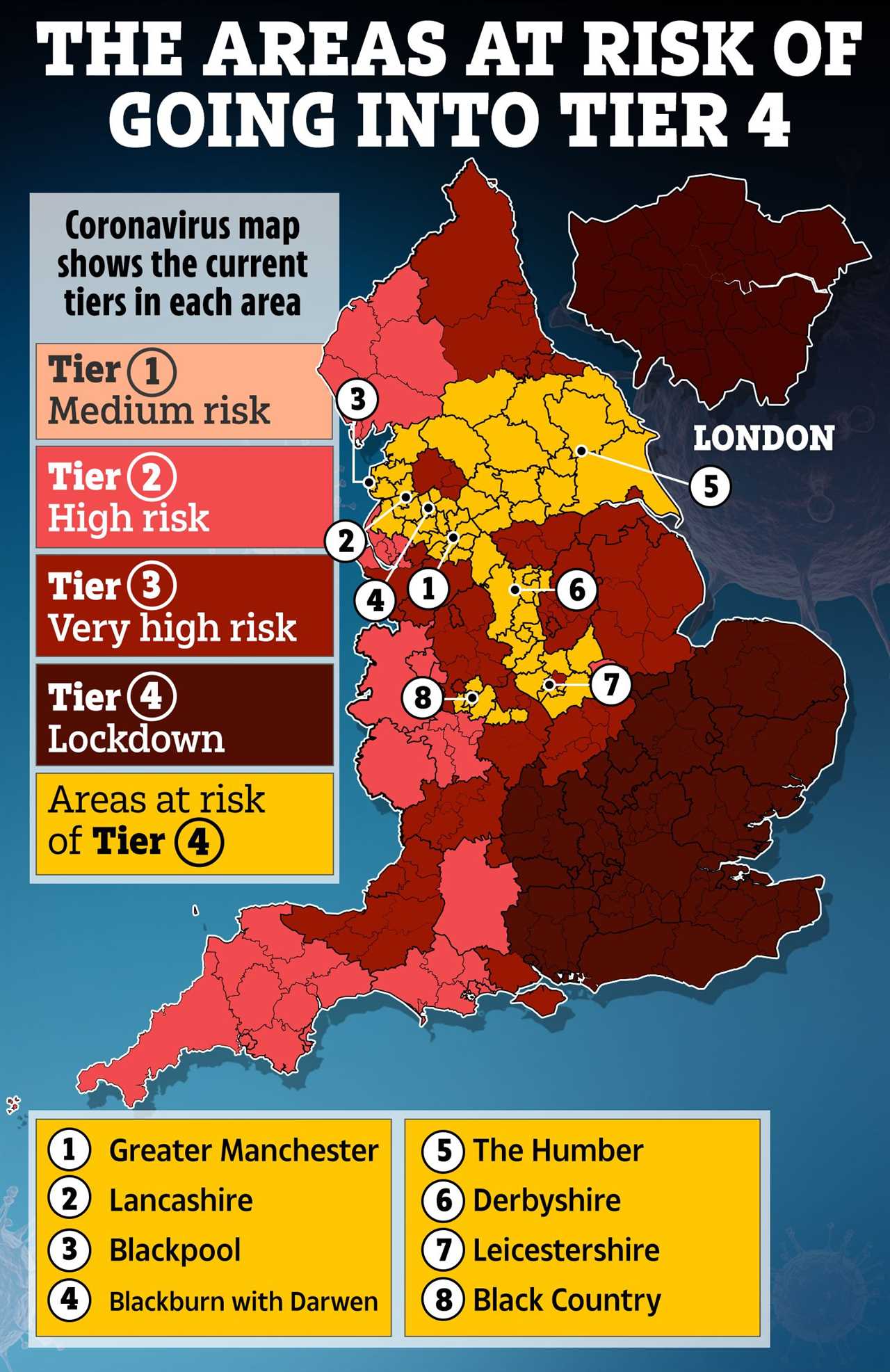
The reopening of schools would see the need for “increased, strict restrictions” in other areas of society “to pay for that”, he added.
NHS England chief executive Sir Simon Stevens has warned that doctors and nurses are “back in the eye of the storm”.
Figures from NHS England show there were 20,426 patients in NHS hospitals in England as of 8am on Monday, compared with the 18,974 patients recorded on April 12.
Sir Simon said: “Many of us have lost family, friends, colleagues and – at a time of year when we would normally be celebrating – a lot of people are understandably feeling anxious, frustrated and tired.
“And now, again, we are back in the eye of the storm with a second wave of coronavirus sweeping Europe and, indeed, this country.”
‘DANGEROUS NEW PHASE’
Prof Hayward, professor of infectious diseases epidemiology at University College London, said widespread Tier 4 restrictions – or even higher – are likely to be needed as the country moves towards “near-lockdown”.
He told BBC Radio 4’s Today programme: “I think we are entering a very dangerous new phase of the pandemic and we’re going to need decisive, early, national action to prevent a catastrophe in January and February.
“A 50 per cent increase in transmissibility means that the previous levels of restrictions that worked before won’t work now, and so Tier 4 restrictions are likely to be necessary or even higher than that.
“I think we’re really looking at a situation where we’re moving into near-lockdown, but we’ve got to learn the lessons from the first lockdown.”
Pressure is continuing to mount on the Government to delay further the reopening of secondary schools in January amid concerns about their contribution to rising cases.
Two teaching unions have warned that allowing students to return will put them at risk of catching the new variants of Covid-19.
Prof Hayward said he thinks schools will have to return “maybe a little bit later” and that reopening would mean “we’re going to have to have increased, strict restrictions in other areas of society to pay for that”.
Geoff Barton, general secretary of the Association of School and College Leaders (ASCL), welcomed the Government’s plans for soldiers to offer remote support for testing in schools, but warned it is unlikely to be enough
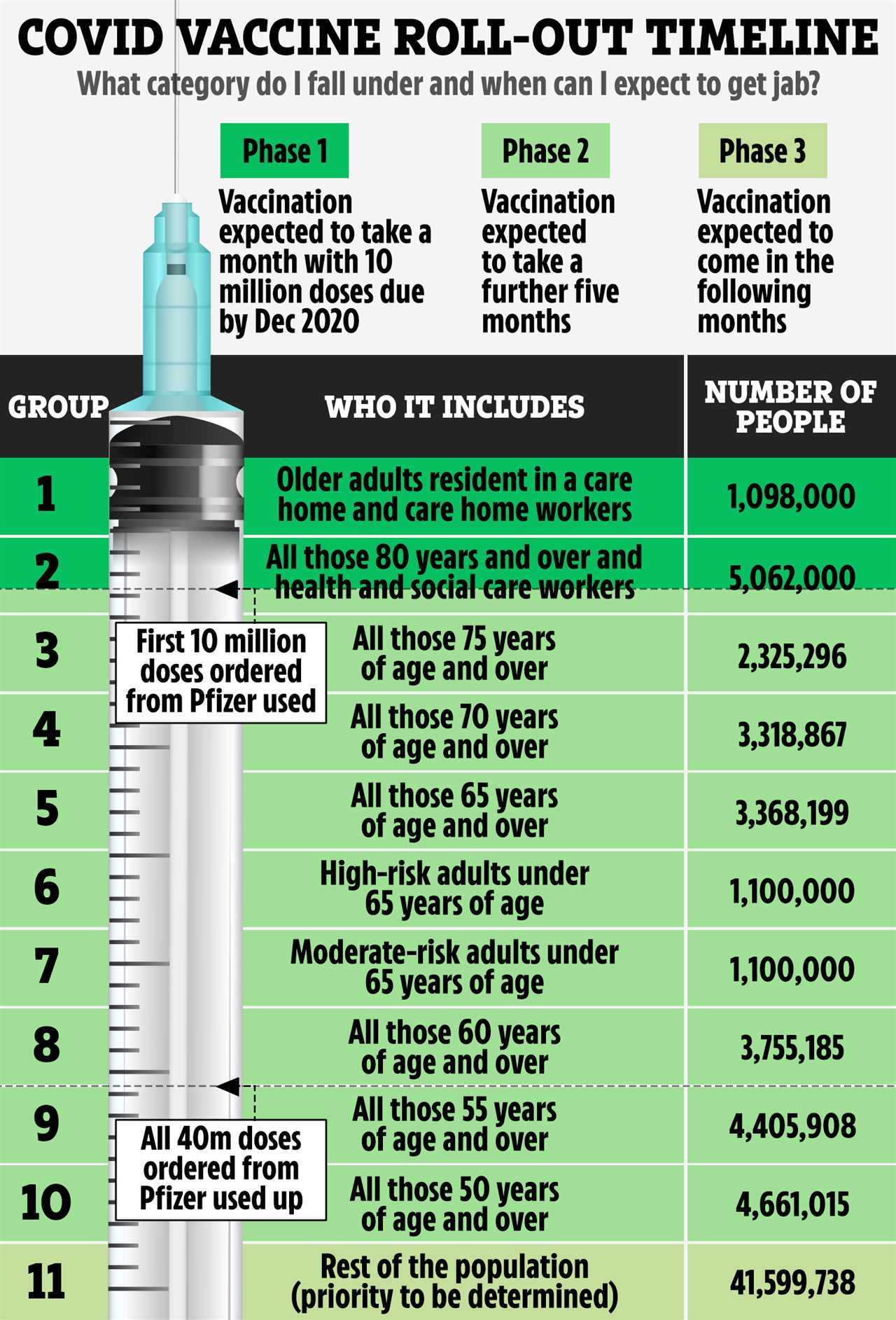
Sir Simon said there is a “chink of hope” in the various Covid-19 vaccines, with the Oxford/AstraZeneca jab expected to be approved imminently by the Medicines and Healthcare products Regulatory Agency, according to reports.
He said: “We think that, by late spring, with vaccine supplies continuing to come on stream, we will have been able to offer all vulnerable people across this country Covid vaccination.
“That perhaps provides the biggest chink of hope for the year ahead.”
But the current vaccination target will have to be doubled to two million jabs a week to avoid a third wave of the virus, according to a projection from a London School of Hygiene and Tropical Medicine paper reported by the Telegraph.
Calum Semple, professor of outbreak medicine at the University of Liverpool and a member of the Scientific Advisory Group for Emergencies (Sage), described the Oxford/AstraZeneca vaccine as a “game changer” but warned that “herd immunity” through vaccination will not be likely until the summer.
NHS PRESSURE
It came as hospitals struggled to cope with the surge in coronavirus patients, while trusts have been told to begin planning for the use of Nightingale hospitals.
Dr Yvonne Doyle, medical director at Public Health England, said: “This very high level of infection is of growing concern at a time when our hospitals are at their most vulnerable, with new admissions rising in many regions.”
Saffron Cordery, deputy chief executive of NHS Providers, said some trusts are reporting up to three times the number of Covid patients as at the peak of the first wave.
“This means hospitals and also ambulance services in Tier 4 areas and beyond are incredibly busy, compounded by increasing staff absences due to illness and the need to self-isolate,” she said.
Dr Nick Scriven, immediate past president of the Society for Acute Medicine, called the trend “extremely worrying” and said “systems will again be stretched to the limit”.
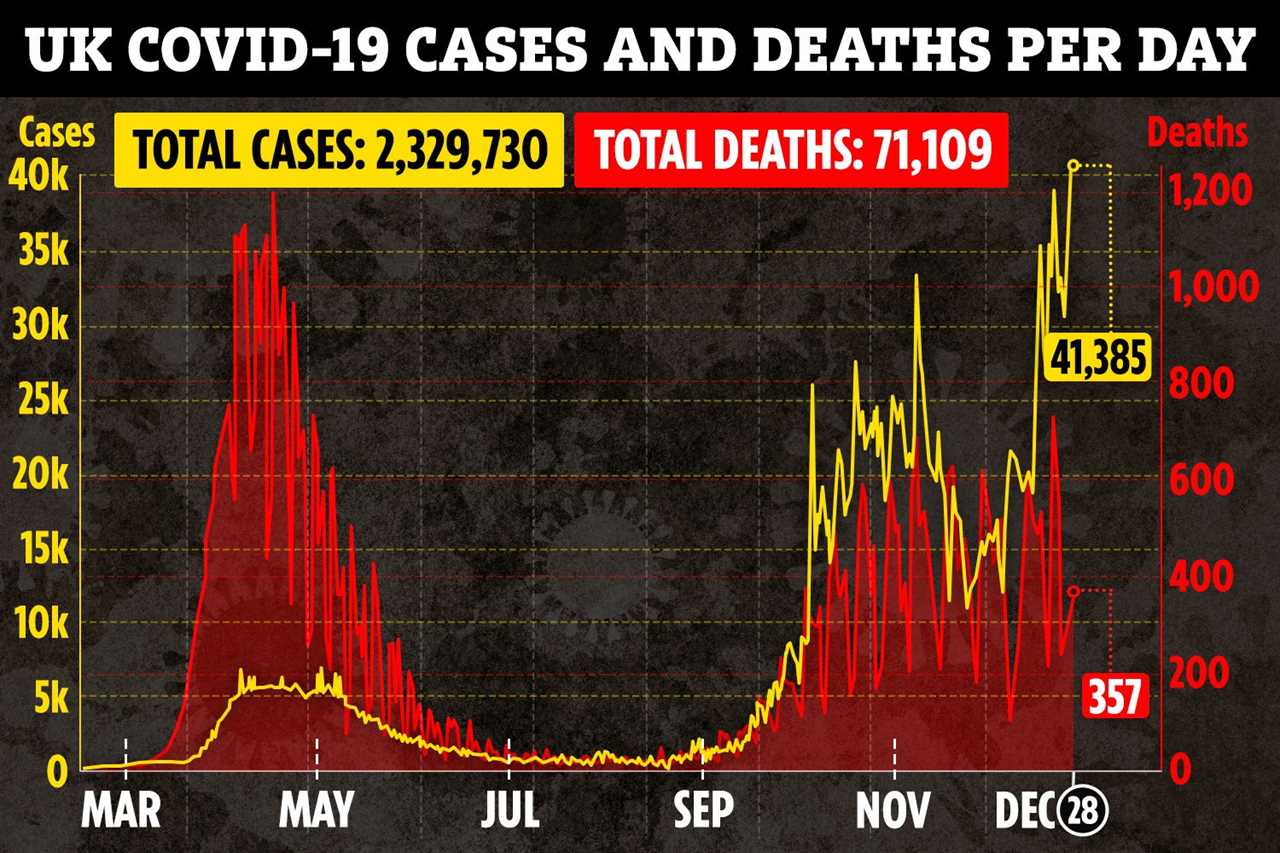
Paramedics in London are receiving support from other ambulance services in the South as they receive up to 8,000 emergency 999 calls each day.
The South Central Ambulance Service (SCAS) said it is “prewarning” the military and fire service that paramedics may need help after an average increase of 10 per cent in 999 calls over the Christmas period and a threefold increase in 111 calls, along with a 60 – 70 per cent increase in absence rates with staff symptomatic or self-isolating.
The Government said a further 357 people have died within 28 days of testing positive for Covid-19 as of Monday, taking the UK total to 71,109.
The number of further lab-confirmed cases of coronavirus recorded in a single day in the UK also hit a new high of 41,385 as of 9am Monday, rising above 40,000 for the first time, according to Government figures.
But the true number is likely to be even higher because figures do not include information from Scotland and Northern Ireland, which did not report data between December 24 and 28.
It is not possible to make direct comparisons with the level of infection during the first wave of the virus, because mass testing was only introduced in the UK in May – but it has been estimated there may have been as many 100,000 cases a day at the peak in late March and early April.
Lockdown measures are also in place across the other three home nations, after mainland Scotland entered Level 4 restrictions from Saturday for three weeks, and a similar stay-at-home order is also in place in Wales.
Northern Ireland has also entered a new six-week lockdown, and the first week measures are the toughest yet, with a form of curfew in operation from 8pm, shops closed from that time and all indoor and outdoor gatherings prohibited until 6am.






